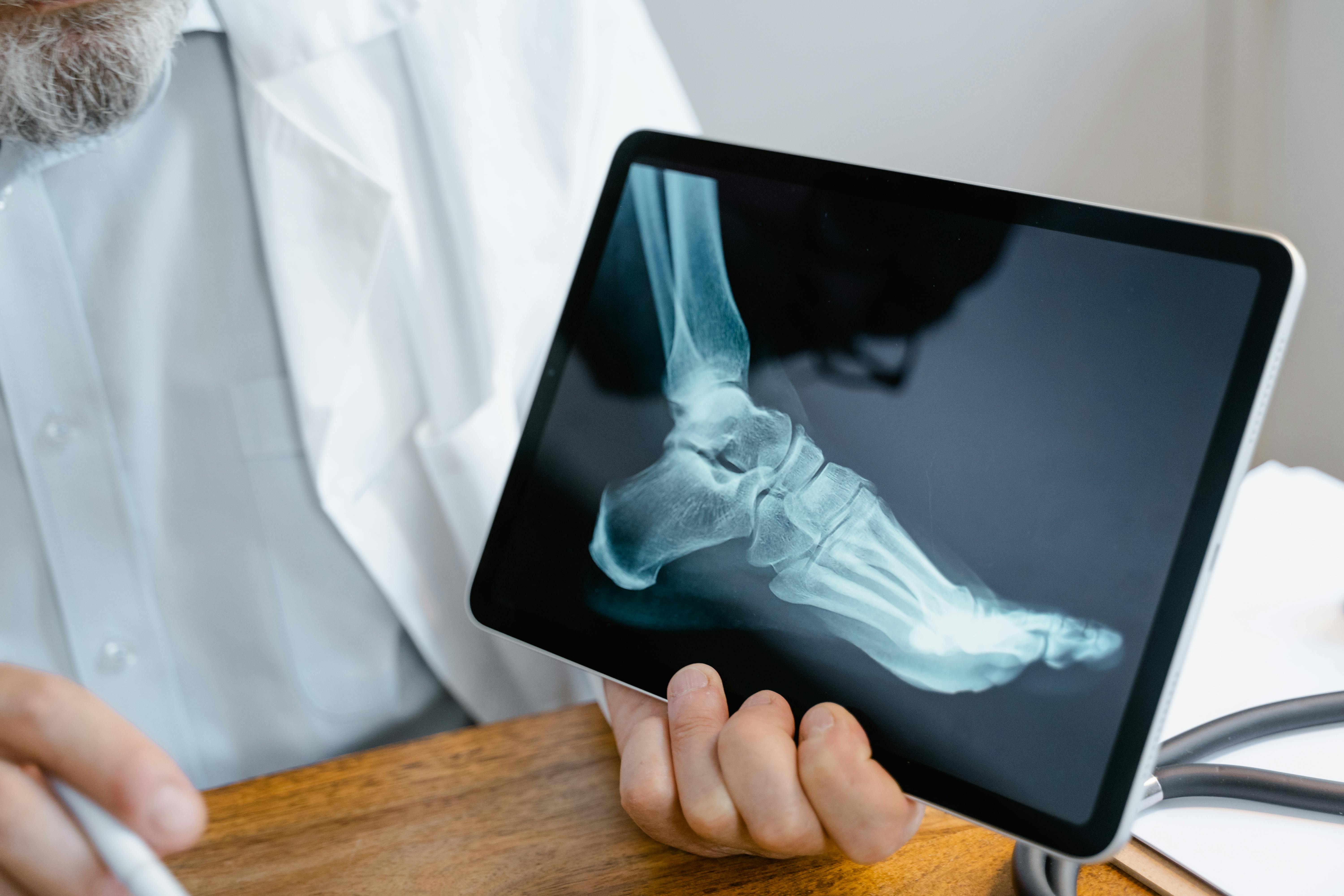What is a fracture?
A fracture is a break in a bone, ranging from a small crack to a complete break. While bones are strong, they can break when too much force is applied, either through sudden trauma, repeated stress or underlying health conditions.
Healing from a fracture takes time, but the right approach can help bones recover more efficiently. Let’s break down why fractures happen, how the healing process works and what you can do to support recovery.
How the fracture healing process works
Bones heal in three main stages, and each phase requires proper care and nutrition to ensure full recovery.
1. Inflammatory phase (first few days)
- The body responds to the fracture by forming a blood clot (haematoma) at the break site.
- Inflammation occurs, bringing white blood cells and nutrients to start the repair process.
- Pain, swelling and bruising are common symptoms during this stage.
2. Repair phase (weeks to months)
- Special bone cells begin forming a soft callus, a temporary bridge over the break.
- Over time, the callus hardens into new bone tissue, but this bone is still weak.
- This phase can take several weeks, depending on the severity of the fracture.
3. Remodelling phase (several months to a year)
- The body replaces the temporary callus with firm, mature bone tissue.
- The bone regains its standard shape and strength, though complete healing can take months.
How to speed up fracture recovery
Healing a fracture requires a combination of rest, nutrition and gradual movement.
1. Follow medical advice and immobilisation
- Use casts, splints or braces as prescribed to keep the bone stable.
- Limit movement of the injured area to prevent re-injury.
- If surgery is required, follow post-operative guidelines carefully.
2. Prioritise nutrition for bone healing
- Calcium-rich foods. Dairy, leafy greens and almonds support bone repair.
- Vitamin D. Sunlight, fatty fish and fortified foods help the body absorb calcium.
- Protein. Lean meats, eggs and beans are essential for tissue repair.
- Magnesium and zinc. Nuts, seeds and whole grains support bone formation.
3. Stay hydrated and avoid bone-weakening habits
- Drink plenty of water to support circulation and healing.
- Avoid smoking and excessive alcohol, as both slow down bone regeneration.
- Limit caffeine intake, as excessive amounts can interfere with calcium absorption.
4. Manage pain and swelling
- Apply ice packs for 15 to 20 minutes every few hours in the early stages.
- Take pain medication as prescribed, but avoid long-term reliance on anti-inflammatory drugs, as they may slow healing.
- Keep the affected area elevated to reduce swelling.
5. Gradual movement and physical therapy
- Once cleared by a doctor, gentle movement and stretching can prevent stiffness.
- Weight-bearing exercises help rebuild bone strength after healing.
- Physical therapy can improve mobility and restore function after a prolonged immobilisation period.
What to avoid during fracture recovery
- Do not remove a cast or splint early. Bones need time to fully heal before bearing weight.
- Avoid high-impact activities until cleared by a doctor to prevent re-fracture.
- Do not smoke, as it significantly slows bone healing.
- Avoid poor nutrition, as inadequate calcium, vitamin D and protein intake can delay recovery.
How long does it take to heal?
Fracture healing time depends on the severity and location of the break, as well as overall health.
- Small fractures (stress fractures, minor breaks). 4 to 6 weeks.
- Moderate fractures (larger breaks, but no surgery needed). 6 to 12 weeks.
- Severe fractures (surgery, multiple breaks). Several months to a year.
Younger individuals typically heal faster, while older adults or those with osteoporosis may take longer.
Final thoughts: supporting your body for stronger bones
Fractures take time to heal, but with the right care, you can speed up recovery and reduce the risk of future breaks. Proper immobilisation, nutrition and gradual movement all play a role in ensuring strong, healthy bones after an injury. Taking the right steps now sets the foundation for better long-term bone health.



